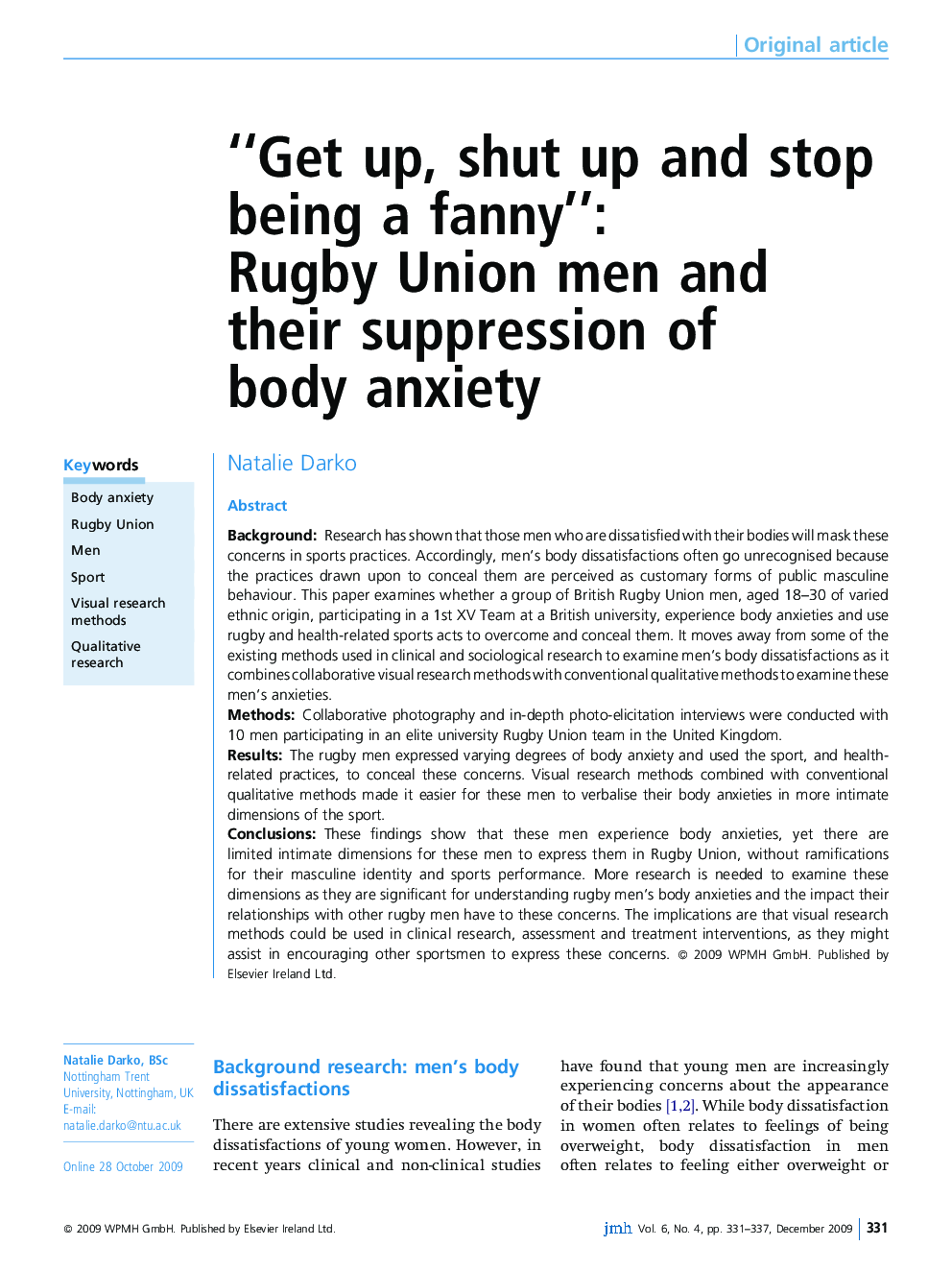| کد مقاله | کد نشریه | سال انتشار | مقاله انگلیسی | نسخه تمام متن |
|---|---|---|---|---|
| 3483597 | 1596843 | 2009 | 7 صفحه PDF | دانلود رایگان |

BackgroundResearch has shown that those men who are dissatisfied with their bodies will mask these concerns in sports practices. Accordingly, men's body dissatisfactions often go unrecognised because the practices drawn upon to conceal them are perceived as customary forms of public masculine behaviour. This paper examines whether a group of British Rugby Union men, aged 18–30 of varied ethnic origin, participating in a 1st XV Team at a British university, experience body anxieties and use rugby and health-related sports acts to overcome and conceal them. It moves away from some of the existing methods used in clinical and sociological research to examine men's body dissatisfactions as it combines collaborative visual research methods with conventional qualitative methods to examine these men's anxieties.MethodsCollaborative photography and in-depth photo-elicitation interviews were conducted with 10 men participating in an elite university Rugby Union team in the United Kingdom.ResultsThe rugby men expressed varying degrees of body anxiety and used the sport, and health-related practices, to conceal these concerns. Visual research methods combined with conventional qualitative methods made it easier for these men to verbalise their body anxieties in more intimate dimensions of the sport.ConclusionsThese findings show that these men experience body anxieties, yet there are limited intimate dimensions for these men to express them in Rugby Union, without ramifications for their masculine identity and sports performance. More research is needed to examine these dimensions as they are significant for understanding rugby men's body anxieties and the impact their relationships with other rugby men have to these concerns. The implications are that visual research methods could be used in clinical research, assessment and treatment interventions, as they might assist in encouraging other sportsmen to express these concerns.
Journal: Journal of Men's Health - Volume 6, Issue 4, December 2009, Pages 331–337